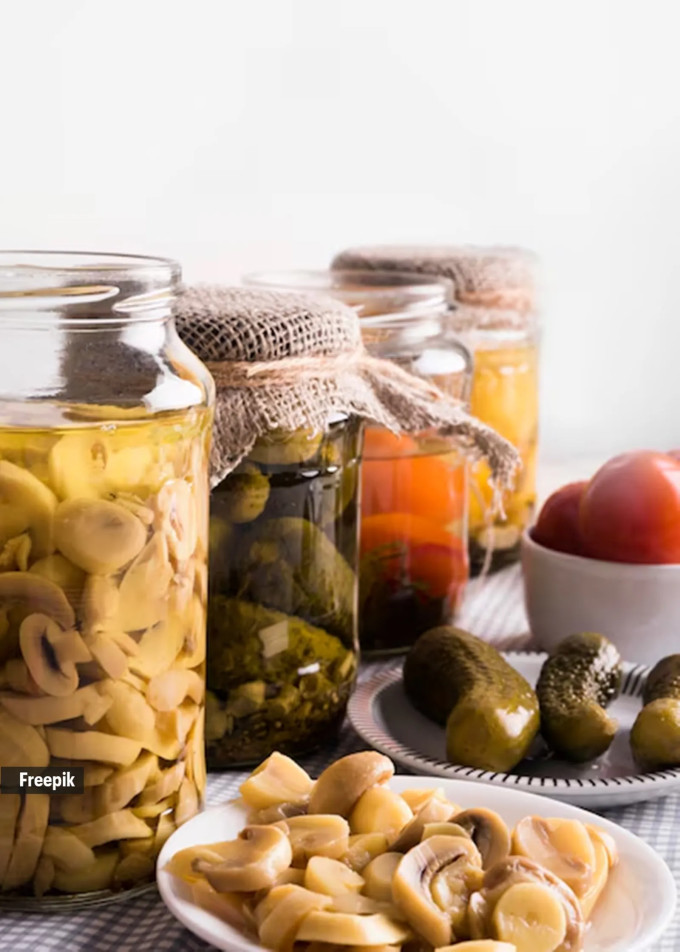What’s your pick: Ready to cook or ready to eat?
Managing work, family and personal commitments often leaves us with limited time to cook. Pre-packaged food alternatives like ready-to-cook and ready-to-eat meals become increasingly attractive in these situations.
While both offer undeniable convenience, the question still persists: are these convenient meals as healthy as cooking from scratch?

Garima Dev Verman, a Certified Nutritionist and Medical Content Analyst with The Healthy Indian Project (THIP), breaks down the key differences and sheds light on their nutritional value.
Garima clarifies the distinction between these two categories:
“Ready-to-cook meals are already prepared to some extent, but might require further cooking steps like microwaving. Think of Haldiram’s retort pouches. Ready-to-eat options, on the other hand, are good to go straight from the package, like popcorn, namkeen (savoury snacks), or khakras (flatbreads).”
Convenience Comes at a Cost
While convenience is a major benefit, Garima cautioned against the potential downsides. “Ready-to-cook and ready-to-eat meals often lack the robust nutritional value of fresh ingredients,” she explained.
“They tend to be higher in sodium to enhance shelf life.” This raises a red flag, as excessive sodium intake can contribute to health problems like high blood pressure.
Garima delved deeper into the world of preservatives:
“Similar to how pickles use salt and mustard oil for preservation, pre-packaged meals rely heavily on sodium and sometimes sugar to extend shelf life. While these preservatives benefit the companies, they’re not exactly health-friendly.”
Hidden sugars can also lurk in sauces and dressings. Nutritionists emphasise the importance of freading labels. “Consumers need to become label detectives. Companies create mass-produced products, and preservation is a necessity. This is why they use sugar and other additives. It’s crucial to be aware of these hidden ingredients.”
 Pickles use sugar and salt for preservation (FreePik)
Pickles use sugar and salt for preservation (FreePik)
The Ideal (But Not Always Achievable) Choice
Garima acknowledged the ideal scenario: “If time allows, cooking a fresh meal with whole ingredients is always the best option for optimal nutrition.”
However, she recognises the realities of busy lifestyles. “For those short on time, ready-to-cook or ready-to-eat options can be an occasional solution. But remember, anything packaged, whether it’s namkeen or biryani, isn’t the healthiest choice.”
She recommended making informed choices: “Read the ingredient lists and nutrition labels carefully. When possible, prioritise fresh ingredients. Remember, India has a rich culinary tradition, and cooking delicious meals doesn’t have to be complicated. It’s a skill worth investing in for your health.”
While ready-to-cook and ready-to-eat meals offer convenience, they shouldn’t become the norm. By understanding their nutritional limitations and developing label-reading skills, you can make informed choices and maintain a healthy balance in your diet.
If a person is not able to cook a meal every day, what you can do is make dal, deep freeze it, suggested Garima, adding that resist the urge to rely on pre-made snacks as your primary source of nutrition.
Disclaimer: The copyright of this article belongs to the original author. Reposting this article is solely for the purpose of information dissemination and does not constitute any investment advice. If there is any infringement, please contact us immediately. We will make corrections or deletions as necessary. Thank you.
